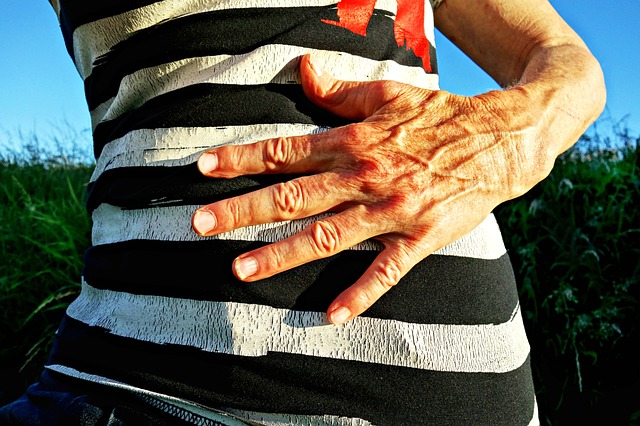In healthy veins, blood flows towards the heart and is prevented from flowing backwards by tiny valves, like little doors. Varicose veins occur when weakened or faulty valves allow blood to flow backwards, causing pools and bulges in the veins. Varicose veins are enlarged veins, usually in the legs or feet. They show up as swollen veins that appear twisted and dark blue or purple.
Other symptoms often include; achy heavy legs, swollen ankles and feet, a burning or throbbing sensation, muscle cramp, increased bleeding with injury to the affected area, restless leg syndrome, and dry itchy skin over the “spider” veins. Symptoms tend to worsen with warm weather or prolonged periods of standing and may lessen with gentle exercise and movement.
Who is most likely to suffer from varicose veins?
It is thought that approximately 25% of adults in the United States suffer from varicose veins, although some groups are more at risk than others. High-risk factors for varicose veins include;
- Gender – females are typically more at risk than males
- Age – varicose veins typically occur more in older people
- Weight – being overweight can increase the risk of varicose veins
- Pregnancy
- Working in a job that includes long periods of standing
Like other conditions which hamper or affect blood flow, varicose veins may cause a range of other complications, including; increased risk of blood clots in the legs, venous ulcers, and chronic venous insufficiency, where exchange of oxygen, nutrients, and waste products between the blood and the skin is reduced due to weak blood flow.
Varicose veins treatment
Often, varicose veins do not cause discomfort and patients will not require treatment. However, if your varicose veins begin to cause you pain and discomfort, the skin over your veins becomes sore or irritated, or the discomfort caused by your varicose veins is disturbing your sleep, it may be best to talk to your doctor about varicose veins treatment.
Fortunately, there is a range of less-invasive treatment options for varicose veins so your doctor may first recommend up to 6 months of self-care, including; weight loss, exercise, avoiding long periods of standing and sitting, and compression stockings. It is important to try to avoid tight-fitting trousers, and take time to put your feet up as elevating your legs can aid blood flow.
However, if your symptoms persist, or you encounter any other complications, you may benefit from more severe treatment, such as;
- Surgery – Large veins may require surgery to remove them. This can be done under general anaesthetic and patients may need to stay overnight if surgery is required on both legs.
- Ligation and stripping – An incision is made at the top of the vein with another at the bottom. The top of the vein is tied and sealed and the vein is pulled out from the bottom. Patients can generally go home the same day, although ligation and stripping can cause some side effects including bruising and pain. Recovery time is usually 1-3 weeks.
- Sclerotherapy – Chemicals are injected into the vein (sometimes with gas or air to create foam). This causes the vein to scar and become blocked. Patients may require multiple treatments.
- Radiofrequency ablation – A small incision is made at the bottom of the vein and a narrow tube is threaded through the vein. A probe is inserted into the tube, using radiofrequency energy to heat the vein causing it to collapse and seal closed. This procedure is usually performed under local anaesthetic.
- Endovenous laser treatment – Very similar to radiofrequency ablation, however, veins are heated by a small laser.
- Transilluminated powered phlebectomy – A light is threaded under the skin to highlight target veins which are cut and removed by suction.
Do you think varicose vein treatment might be for you?
If you think you might have varicose veins, or you’ve previously been diagnosed but feel that you would benefit from surgery, make an appointment with your doctor to talk about what your options could be. Make sure to ask your doctor about the cost of treatment and whether your insurance will cover it. There may be differences in cost depending on whether you require surgery to treat your symptoms or for cosmetic reasons.
Recent Posts
- Castor Oil For Better Hair Growth: Is It Myth Or Fact?
- Exploring the Differences Between Sermorelin, Ipamorelin, Ibutamoren, GHRP2, and GHRP6: Understanding Their Role in Human Growth Hormone Regulation
- Unraveling the Mystery: Understanding the Causes and Prognosis of Ventricular Tachycardia Without Apparent Heart Disease
- Understanding Grandparents’ Rights in Oklahoma: Navigating Visitation and Legal Protections
- 10 Reasons to Consider Hypnotherapy for Your Health

